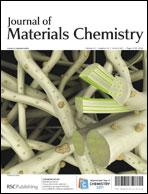On the origin of the blocking effect of grain-boundaries on proton transport in yttrium-doped barium zirconates
Abstract
Despite the superior bulk protonic conductivity combined with chemical stability in the temperature region in which intermediate-temperature solid


 Please wait while we load your content...
Please wait while we load your content...